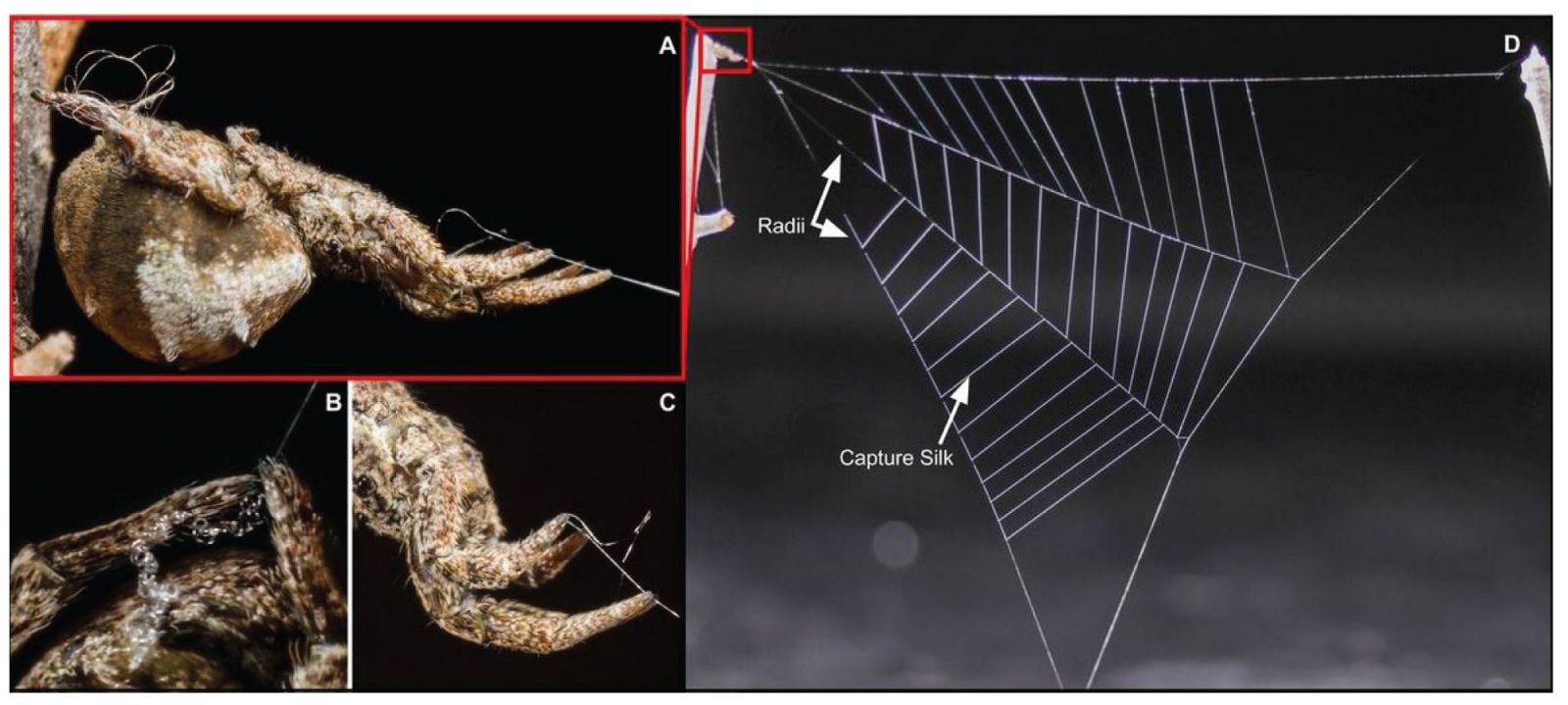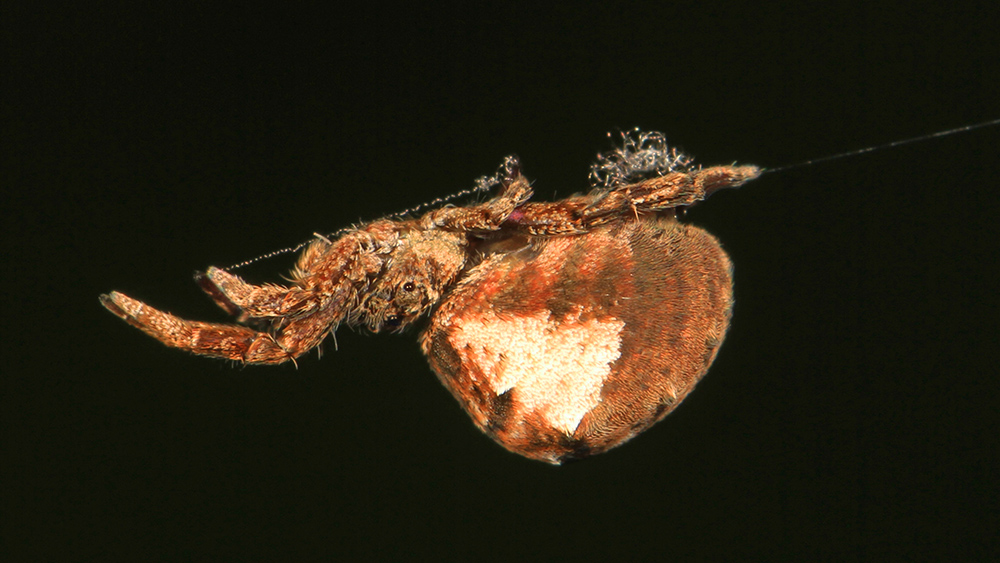Power amplification is an ingenious engineering principle that enables animals to produce exceptionally rapid and powerful movements that exceed the normal physiological limits of muscle power and speed. Some of the best known examples of this design principle in nature are the ultrafast strike of the mantis shrimp’s claw, a power-packed thrust that can break aquarium glass, and the flea’s jump in which it accelerates at 100 Gs (force of gravity) while reaching heights of over 100 times its body length.2,3 However, until now, scientists have only been aware of examples of muscle-driven power amplification that involve anatomical structures alone, like the above examples that produce rapid bursts of movement from a single cycle of muscular contraction.

Image credit: Han, S. I., H. C. Astley, D. D. Maksuta, and T. A. Blackledge. 2019. External power amplification drives prey capture in a spider web. Proceedings of the National Academy of Sciences USA. 116 (24): 12060-12065.
This new study focused on the triangle-weaver spider (Hyptiotes) that cleverly uses its web as a crafty tool that capitalizes on the principle of power amplification. In an amazing confluence of innate creature behavior and engineering design, the spider produces an ultra-rapid prey-entangling web action unlike a typical spider’s web that is sticky but static. The researchers in this study commented that this is, “the only known example of external power amplification outside of human tools.”
The spider expertly generates, and eventually releases, tension by waiting for prey in the corner of its triangular shaped web where main radial threads converge with its body. Its body acts as a link between an anchor line connected to cross threads and a trap line connected to the main triangle of the web. In preparing for action, the spider moves backward along the anchor line in a unique leg-over-leg motion that pulls the springy web taut, loading it with immense energy over multiple tightening cycles. When a prey lands on the web, the spider releases its grip on the anchor line, and both the spider and web instantly surge forward. The action also causes multiple lines of spider silk to slam into and fully entangle the prey. Any further forward movement ceases as slack is removed from the anchor line caused by the spider squeezing its internal spinnerets so that no more silk is produced. If the prey is exceptionally large or vigorous, the spider can repeat its unique actions multiple times to tighten and release the lines to further entangle prey.
The study authors discovered that the elastic energy stored in the web, and expertly manipulated by the spider, creates a huge amount of propulsive force, as opposed to simply jumping or moving the web with its legs like other spiders. As a result of these new observations, we have yet one more unique example of a creature that generates enormous power that exceeds muscular capacity alone.
The researchers who analyzed the amazing physics and energy kinetics behind this spidery genius claimed an analogy to human-engineering. They stated,
This finding reveals an underappreciated function of spider silk and expands our understanding of how power amplification is used in natural systems, showing remarkable convergence with human-made power-amplifying tools.
Such complex design-based ingenuity in biological systems, especially one where both highly intelligent creature behavior and complicated bio-engineering converge, ultimately glorifies the mighty Creator God who made it all.
References
1. Han, S. I., H. C. Astley, D. D. Maksuta, and T. A. Blackledge. 2019. External power amplification drives prey capture in a spider web. Proceedings of the National Academy of Sciences USA. 116 (24): 12060-12065.
2. Patek, S. N., Korff, W. L., Caldwell, R. L. 2004. Biomechanics: Deadly strike mechanism of a mantis shrimp. Nature. 428 (6985): 819-20.
3. Sutton, G. P., Burrows, M. 2011. Biomechanics of jumping in the flea. Journal of Experimental Biology. 214 : 836-847.
*Dr. Tomkins is Director of Life Sciences at the Institute for Creation Research and earned his Ph.D. in genetics from Clemson University.













